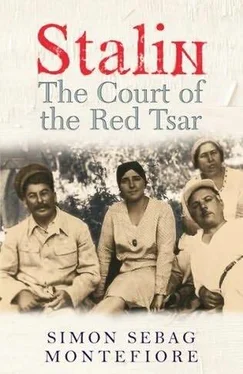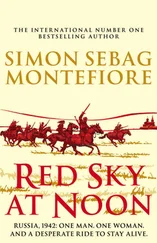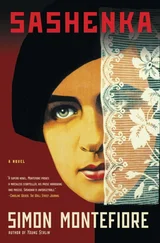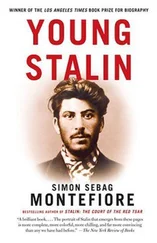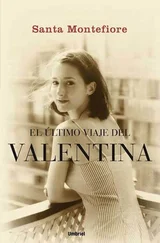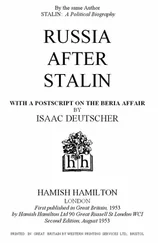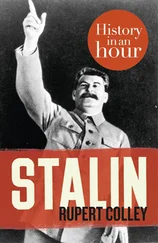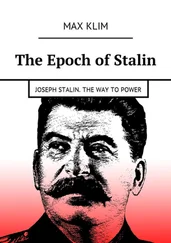* * *
“Brash and masculine,” tall and strong with black hair, long eyelashes and “fine brown eyes,” Lazar Moiseyevich Kaganovich was a workaholic always playing with amber worry beads or a key chain. Trained as a cobbler with minimal primary education, he looked first at a visitor’s boots. If he was impressed with their workmanship, he sometimes forced the visitor to take them off so he could admire them on his desk where he still kept a specially engraved tool set, presented to him by grateful workers.
The very model of a macho modern manager, Kaganovich had an explosive temper like his friend Sergo. Happiest with a hammer in his hand, he often hit his subordinates or lifted them up by their lapels—yet politically he was cautious, “quick and clever.” He constantly clashed with plodding Molotov who regarded him as “coarse, tough and straitlaced, very energetic, a good organizer, who floundered on… theory.” But he was the leader “most devoted to Stalin.” Despite the strong Jewish accent, Sergo believed he was their best orator: “He really captured the audience!” A boisterous manager so tough and forceful that he was nicknamed “The Locomotive,” Kaganovich “not only knew how to apply pressure,” said Molotov, “but he was something of a ruffian himself.” He “could get things done,” said Khrushchev. “If the CC put an axe in his hands, he’d chop up a storm” but destroy the “healthy trees with the rotten ones.” Stalin called him “Iron Lazar.”
Born in November 1893 in a hut in the remote village of Kabana in the Ukrainian-Belorussian borderlands into a poor, Orthodox Jewish family of five brothers and one sister, who all slept in one room, Lazar, the youngest, was recruited into the Party by his brother in 1911 and agitated in the Ukraine under the unlikely name of “Kosherovich.”
Lenin singled him out as a rising leader: he was far more impressive than he seemed. Constantly reading in his huge library, educating himself with Tsarist history textbooks (and the novels of Balzac and Dickens), this “worker-intellectual” was the brains behind the militarisation of the Party state. In 1918, aged twenty-four, he ran and terrorised Nizhny Novgorod. In 1919, he demanded a tight dictatorship, urging the military discipline of “Centralism.” In 1924, writing in clear but fanatical prose, it was he who designed the machinery of what became “Stalinism.” After running the appointments section of the CC, “Iron Lazar” was sent to run Central Asia then, in 1925, the Ukraine, before returning in 1928, joining the Politburo as a full member at the Sixteenth Congress in 1930.
Kaganovich and his wife Maria met romantically on a secret mission when these young Bolsheviks had to pretend to be married: they found their roles easy to play because they fell in love and got married. They were so happy together that they always held hands even sitting in Politburo limousines, bringing up their daughter and adopted son in a loving, rather Jewish household. Humorous and emotional, Lazar was an athlete who skied and rode, but he possessed the most pusillanimous instinct for self-preservation. As a Jew, Kaganovich was aware of his vulnerability and Stalin was equally sensitive in protecting his comrade from anti-Semitism. Kaganovich was the first true Stalinist, coining the word during a dinner at Zubalovo. “Everyone keeps talking about Lenin and Leninism but Lenin’s been gone a long time… Long live Stalinism!”
“How dare you say that?” retorted Stalin modestly. “Lenin was a tall tower and Stalin a little finger.” But Kaganovich treated Stalin far more reverently than Sergo or Mikoyan: he was, said Molotov disdainfully, “200% Stalinist.” He so admired the Vozhd , he admitted, that “when I go to Stalin, I try not to forget a thing! I so worry every time. I prepare every document in my briefcase and I fill my pockets with cribs like a schoolboy because no one knows what Stalin’s going to ask.” Stalin reacted to Kaganovich’s schoolboyish respect by teaching him how to spell and punctuate, even when he was so powerful: “I’ve reread your letter,” Kaganovich wrote to Stalin in 1931, “and realize that I haven’t carried out your directive to master punctuation marks. I’d started but haven’t quite managed it, but I can do it despite my burden of work. I’ll try to have full stops and commas in future letters.” 16He respected Stalin as Russia’s own “Robespierre” and refused to call him by the intimate “thou”: “Did you ever call Lenin ‘thou’ ?” 17
His brutality was more important than his punctuation: he had recently crushed peasant uprisings from the North Caucasus to western Siberia. Succeeding Molotov as Moscow boss and the hero of a cult approaching Stalin’s own, Iron Lazar began the vandalistic creation of a Bolshevik metropolis, enthusiastically dynamiting historic buildings.
By the summer of 1931, a serious shortage in the countryside was beginning to develop into a famine. While the Politburo softened its campaign against industrial specialists in mid-July, the rural struggle continued. The GPU and the 180,000 Party workers sent from cities used the gun, the lynch mob and the Gulag camp system to break the villages. Over two million were deported to Siberia or Kazakhstan; in 1930, there were 179,000 slaving in the Gulags; almost a million by 1935. 18Terror and forced labour became the essence of Politburo business. On a sheet covered in doodles, Stalin scrawled in a thick blue pencil:
Who can do the arrests?
What to do with ex-White military in our industrial factories?
Prisons must be emptied of prisoners. [He wanted them sentenced faster to make room for kulaks.]
What to do with different groups arrested?
To allow… deportations: Ukraine 145,000. N. Caucasus 71,000. Lower Volga 50,000 (a lot!), Belorussia 42,000… West Siberia 50,000, East Siberia 30,000…
On and on it goes until he totals it up to 418,000 exiles. 19Meanwhile, he totted up the poods of grain and bread by hand on pieces of paper, [28] Throughout his career, he would keep the crown jewels, as it were, the Soviet gold reserve or the number of tanks in his reserve at the Battle of Moscow in 1941, scribbled in his personal notebook. He took a special interest in gold production, which was mostly by forced labour.
like a village shopkeeper running an empire. 20
* * *
“Let’s get out of town,” scrawled Stalin, around this time, to Voroshilov, who replied on the same note:
“Koba, can you see… Kalmykov for five minutes?”
“I can,” answered Stalin. “Let’s head out of town and take him with us.” 21The war of extermination in the countryside in no way restrained the magnates’ country-house existence. They had been assigned dachas soon after the Revolution where, often, the real power was brokered.
At the centre of this idyllic life was Zubalovo, near Usovo, 35 kilometres outside Moscow, where Stalin and several others had their dachas. Before the Revolution, a Baku oil nabob named Zubalov had built two walled estates, each with a mansion, one for his son, one for himself. There were four houses altogether, gabled Gothic dachas of German design. The Mikoyans shared the Big House at Zubalovo Two with a Red Army commander, a Polish Communist and Pavel Alliluyev. Voroshilov and other commanders shared a Little House. Their wives and children constantly visited one another—the extended family of the Revolution enjoying a Chekhovian summer.
Stalin’s Zubalovo One was a magical world for the children. “It was a real life of freedom,” recalls Artyom. “Such happiness,” thought Svetlana. The parents lived upstairs, the children downstairs. The gardens were “sunny and abundant,” wrote Svetlana. Stalin was an enthusiastic gardener though he preferred inspecting and clipping roses to real labour. Photographs show him taking his little children for strolls round the gardens. There was a library, a billiard room, a Russian bath and later a cinema. Svetlana adored this “happy sheltered life” with its vegetable gardens, orchards and a farm where they milked cows and fed geese, chickens and guinea fowl, cats and white rabbits. “We had huge white lilacs, dark purple lilacs, jasmine which my mother loved, and a very fragrant shrub with a lemony smell. We walked in the woods with nanny. Picked wild strawberries and black currants and cherries.”
Читать дальше
